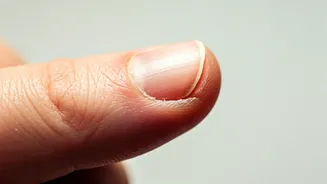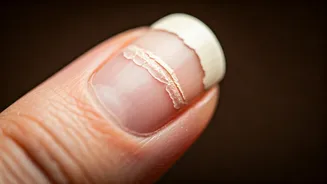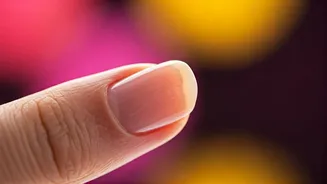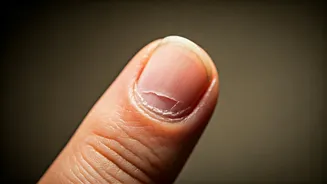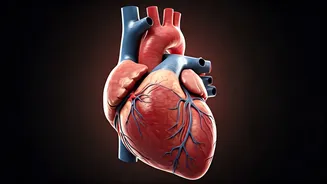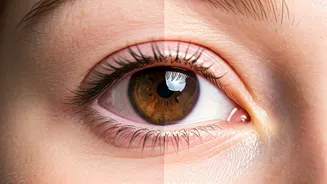Understanding Peeling Nails
Peeling nails, also known as onychoschizia, can be a common occurrence for many individuals. This condition is characterised by the separation of nail layers,
resulting in a flaky or brittle appearance. The causes of peeling nails are diverse and can include both environmental factors and underlying health conditions. Exposure to harsh chemicals, excessive hand washing, and frequent use of nail polish removers are examples of external factors that can contribute to nail damage. Additionally, certain nutritional deficiencies, such as lack of iron or biotin, and underlying medical issues, like thyroid problems or fungal infections, can trigger nail peeling. A thorough understanding of these potential causes is essential for effective diagnosis and treatment.
External Factors' Impact
External elements often play a significant role in causing nails to peel. Frequent contact with water, such as washing dishes or showering frequently, can strip the nails of their natural oils, leading to dryness and brittleness. Similarly, exposure to harsh chemicals found in household cleaning products and nail polish removers can weaken the nail structure. Overuse of nail polish and acrylics, which require strong chemicals for application and removal, can also contribute to nail damage. Furthermore, environmental factors like cold weather and low humidity can dehydrate the nails, making them more susceptible to peeling. Protecting nails from these external stressors is crucial for preventing and managing the condition. This can involve wearing gloves during cleaning, using gentle nail polish removers, and moisturizing the nails regularly.
Nutritional Deficiencies & Nails
Nutritional deficiencies can significantly impact nail health, contributing to peeling and other nail problems. Insufficient intake of essential nutrients such as biotin, iron, and protein can weaken the nail structure. Biotin, a B-vitamin, is particularly important for strengthening nails, and its deficiency can lead to brittle and peeling nails. Iron deficiency, often associated with anemia, can cause spoon-shaped nails, which are prone to peeling and breakage. Protein is another vital nutrient, as nails are primarily composed of keratin, a protein. Inadequate protein intake can impair keratin production, leading to weaker nails. Addressing these deficiencies through a balanced diet or supplements can play a crucial role in improving nail health. It's advisable to consult with a healthcare professional to determine if you have any nutrient deficiencies.
Medical Conditions' Role
Several underlying medical conditions can manifest in the form of peeling nails. Thyroid disorders, both hypothyroidism (underactive thyroid) and hyperthyroidism (overactive thyroid), can affect nail growth and structure, resulting in dryness, brittleness, and peeling. Fungal nail infections, such as onychomycosis, are a common cause of nail changes, causing the nails to become thick, discolored, and prone to peeling. Psoriasis, a chronic skin condition, can also affect the nails, leading to pitting, thickening, and peeling. In some cases, nail changes can be a sign of more serious conditions such as autoimmune diseases. Therefore, consulting a healthcare professional is important to diagnose and manage any underlying medical conditions effectively.
Effective Remedies & Care
Treating peeling nails involves a combination of remedies and careful nail care practices. Moisturizing the nails regularly with a hand cream or oil, especially after washing hands, helps to keep them hydrated and flexible. Avoiding harsh chemicals and opting for gentle nail polish removers is essential. Filing nails in one direction can help prevent splitting and breakage. Shortening nails to minimize exposure to external factors and reduce the risk of damage is also beneficial. In cases of nutritional deficiencies, taking supplements, such as biotin or iron, under the guidance of a healthcare professional can improve nail health. For fungal infections, antifungal treatments prescribed by a doctor may be necessary. Seeking professional help ensures an accurate diagnosis and appropriate treatment strategy.
Preventive Strategies for Strong Nails
Implementing preventive measures is key to maintaining strong and healthy nails. Regularly moisturizing the hands and nails can prevent dryness and brittleness, which are common causes of peeling. Wearing gloves while doing chores that involve water or harsh chemicals protects the nails from damage. Maintaining a balanced diet rich in essential nutrients, particularly biotin, iron, and protein, supports nail health from the inside out. Avoiding biting or picking at nails, which can weaken the nail structure, is also important. Regular nail trimming and filing, using a fine-grit file, can help to prevent splitting and breakage. Additionally, allowing nails to 'breathe' between nail polish applications can help reduce exposure to harsh chemicals and maintain overall nail health.
